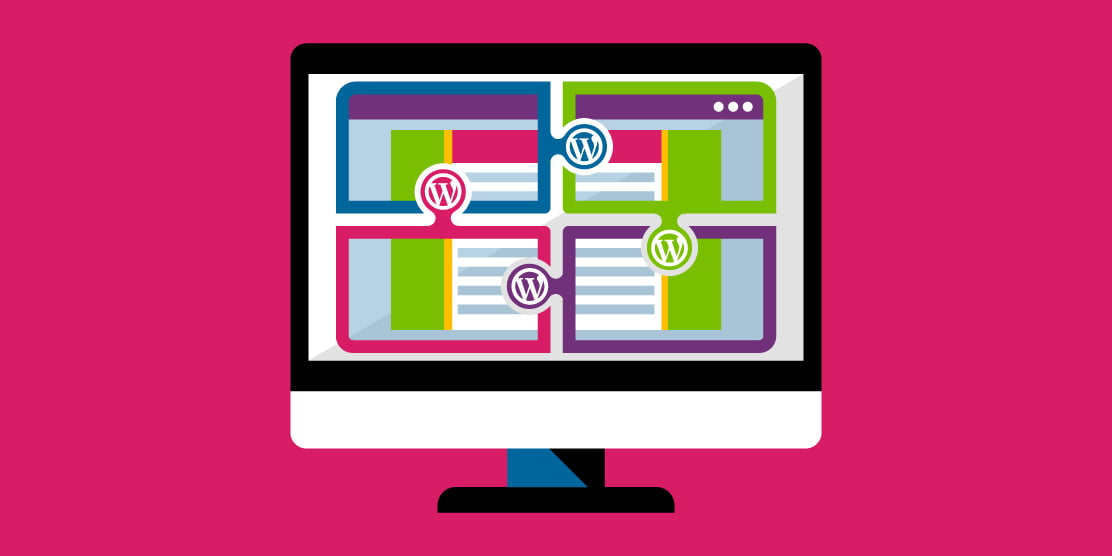
Author’s note: this is an updated version of a 2016 post containing revised and new information.
What is Multisite?
WordPress Multisite creates a network of websites that can be managed together using a single WordPress installation.
When to Use Multisite
Multisite is very beneficial to companies that have multiple sites with similar content and functionality.
Benefits
- Manage all sites from one dashboard.
- Update the WordPress installation once for all the sites.
- Install and update plugins on a network-wide basis with one download.
- Drastically decrease new site deployment costs by repurposing an existing site’s code to create another site within the multisite network.
- Set up the network sites to appear within one site or independently with unique URLs.
- Help maintain a cohesive, branded design across multiple websites.
Examples
One Site with Multiple “Integrated” Blogs
Since the regular WordPress installation only allows for one integrated blog, WordPress Multisite is a great option for firms with multiple blogs. The blogs can be set up within the main site so that the network of sites appears to be one website from a visitor’s standpoint. We implemented this solution for a few law firm sites we designed where the firms have practice/industry-specific blogs, including Adler Pollock & Sheehan, Sherin and Lodgen, and Anderson Kreiger. When you visit these sites, you’ll find a drop-down menu under the main Blog button. From there you can navigate to each blog, but the overall experience feels like you have never left the main firm website. The perception of the network of sites as a single entity is enhanced by including database-driven crosslinks to the related blog posts on the main site’s bio, practice, and industry pages.
Main Site Plus a Network of Integrated Blogs with Unique URLs
It is also possible to use unique URLs for each blog, but still create the integrated experience described above, where it is easy to navigate between the main firm website and the blogs to access all content. An example of this is the Bowditch website, with its five blogs: At the Bar with Bowditch, Campus Counsel, Commercial Real Estate, Don’t Tax Yourself, and The Case for Inclusion.
Similar Sites with Unique URLs
When a company has separate sites with similar content and functionality needs, implementing Multisite can save time and money by consolidating the administration of the sites and by using the same site design. WordPress Multisite was ideal for Farley White, a commercial property investment firm. We custom-designed a “theme” for Farley White’s three commercial office buildings and a self-storage facility in Lowell, MA. While each site has a unique URL and a distinct color palette, they all work together as a consistently branded package. See Wannalancit Mills, Cross River Center, the Offices at Boott Mills, and Boott Mills Storage.
When Not to Use Multisite
Utilizing Multisite adds complexity and it’s not the right solution for every project. The Multisite network of sites shares one hosting account, which means downtime or traffic-related slow load times can affect all the sites. So it’s important to select a reputable host with good credentials and pay attention to the number of sites each plan supports when installing a Multisite network. Additionally, not all plugins are Multisite compatible. However, this is not as restricting as it once was. There are many more Multisite-compatible plugins available since Multisite first became available in 2010.
WordPress Multisite may also be too constraining if a company has multiple sites, but there is no overlap in site administration or the sites have very different functionality and design needs. There are other admin panels available to manage multiple WordPress site installations if that is the primary objective.
To Implement or Not to Implement
Whether or not to add Multisite capabilities should be decided before programming a new site. It is not possible to convert an existing single WordPress installation to a WordPress Multisite installation without substantial reprogramming. Conversely, individual sites in a network can be migrated to traditional single site installs should the need arise, although it can be difficult to do.
Summary
In our experience, WordPress Multisite can be advantageous for firms that have multiple sites, such as active blogs, where all can follow a similar, cohesive, branded design. Multisite can be especially advantageous when each blog has separate subscription lists that you want to maintain. Alternately, if you have multiple blogs (each focusing on a specific practice area, for example), you may want to consider combining all into a single blog with categories specific to each practice. A single, centralized blog can improve readership and cross-selling between practices. For an example, see the Ruberto Israel & Weiner blog with categories for practice areas including Commercial Real Estate, Employment Law, Hospitality & Retail Services, etc.
If you are not sure whether or not Multisite is a good fit for your firm, we would be happy to candidly advise you based on your specific needs and goals.
Related Posts:
Why Integrated Blogs are Better
Why is WordPress So Popular?
How Much Does a Website Cost, Really?




